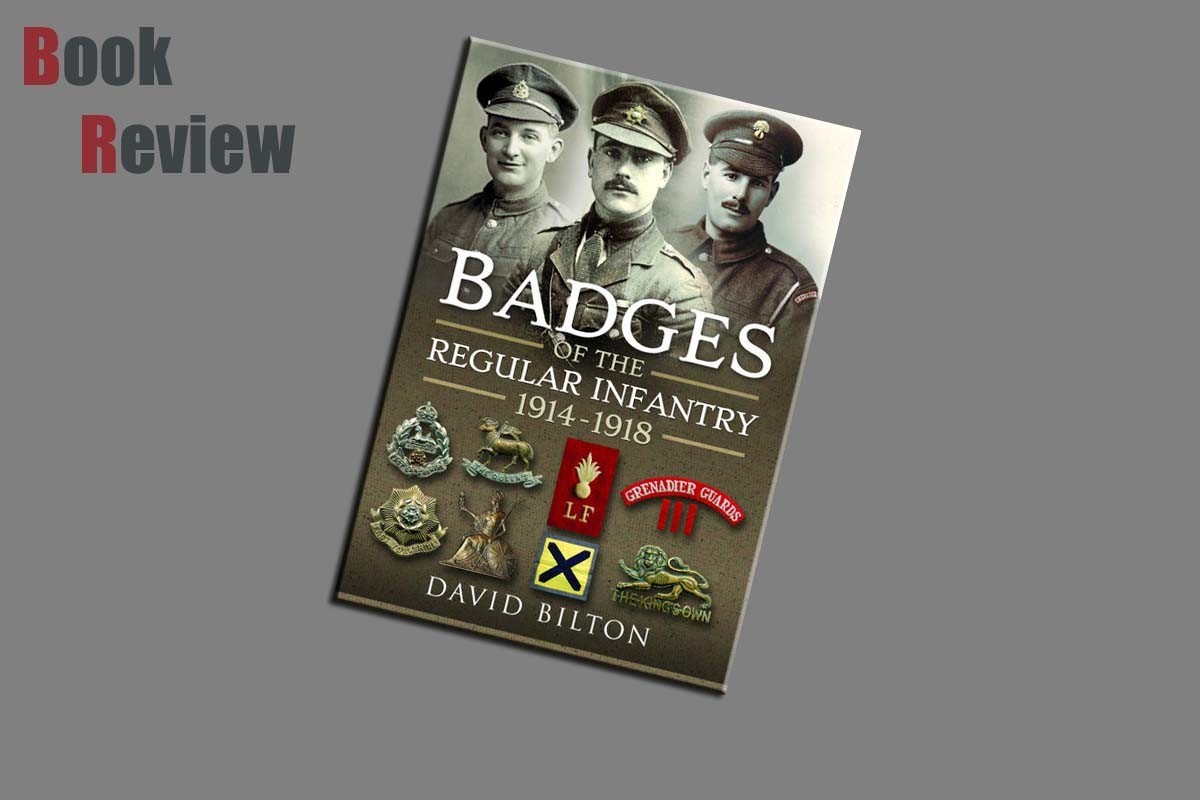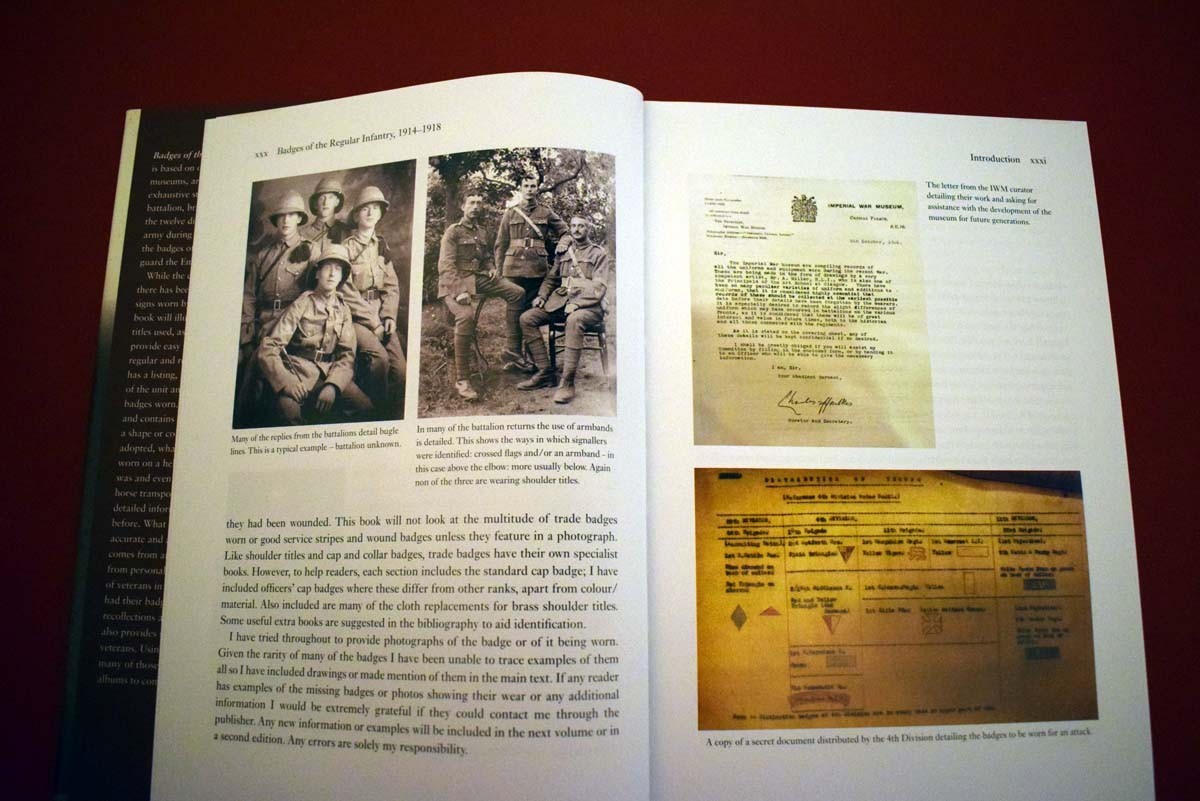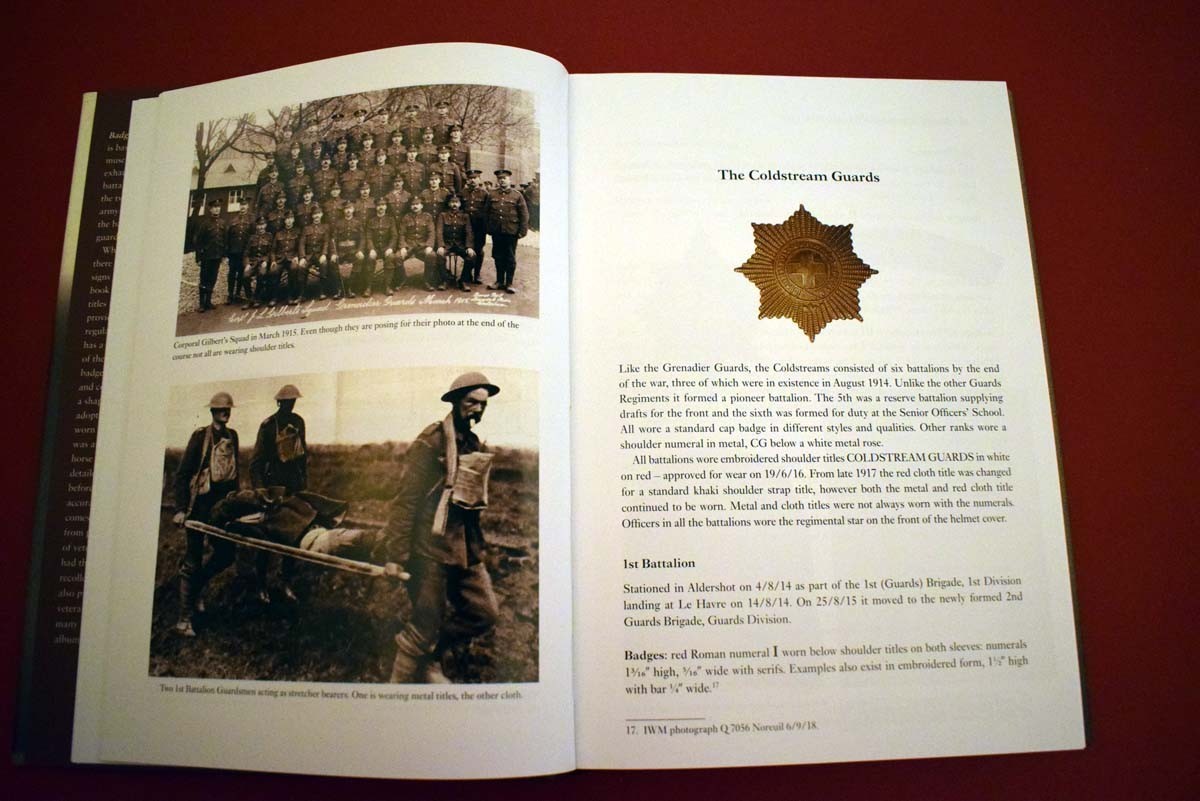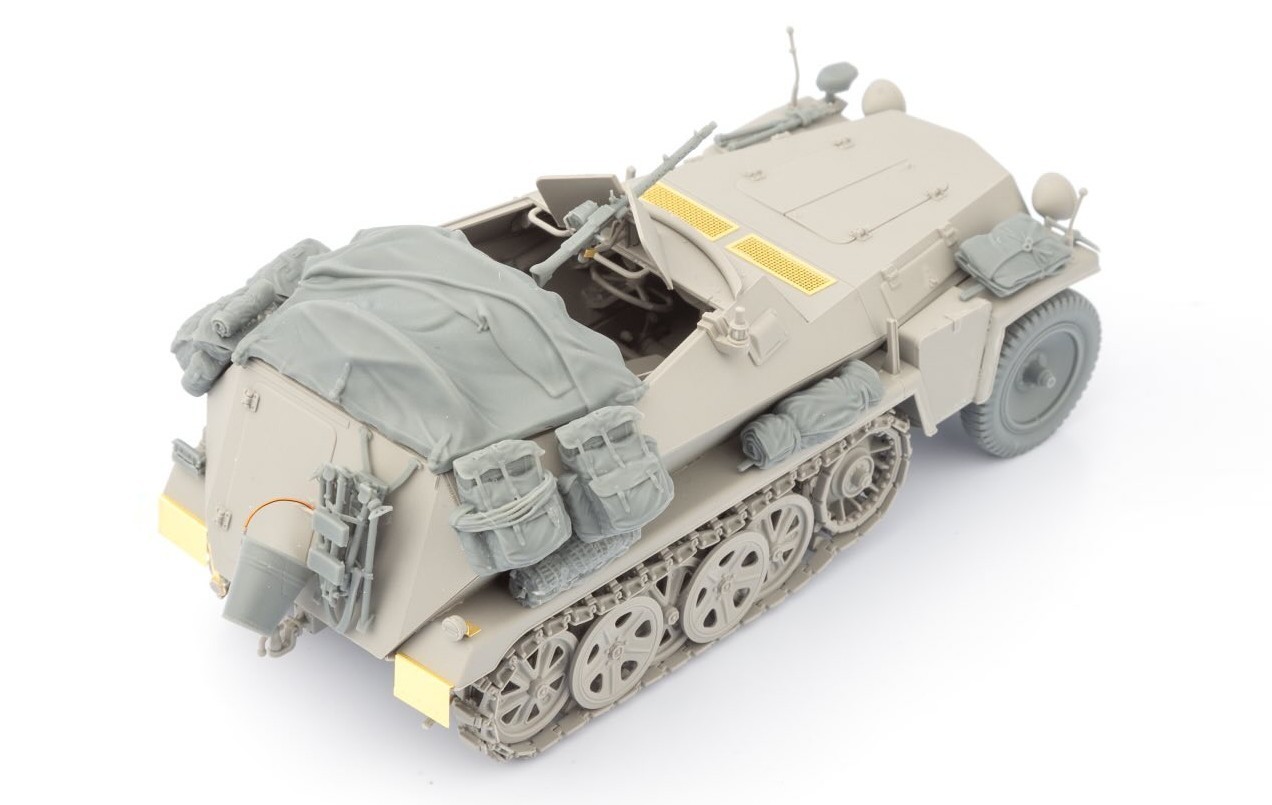
Introduction
The following introduction is as provided by Pen and Sword:
Badges of the Regular Infantry, 1914-1918 is based on over thirty years research in museums, archives and collections. It is an exhaustive study of the development of the battalion, brigade and divisional signs of the twelve divisions that formed the regular army during the Great War. It also looks at the badges of those battalions left behind to guard the Empire.
While the divisional signs are well known, there has been no authoritative work on the signs worn by the infantry battalions. The book will illustrate the cap and shoulder titles used, as well as cloth signs worn to provide easy recognition in the trenches. Each regular and reserve battalion of a regiment has a listing, which provides a brief history of the unit and detailed information on the badges worn. It is profusely illustrated and contains much information, like why a shape or colour was chosen, when it was adopted, what size it was, whether it was worn on a helmet, what colour the helmet was and even what colours were used on horse transport; the majority of this rich and detailed information has never been published before. What helps make the information accurate and authoritative is that much of it comes from an archive created at the time and from personal correspondence with hundreds of veterans in the 1980s, many of whom still had their badges and often had razor-sharp recollections about wearing them. The book also provides some comments from these veterans. Using the illustrations will allow many of those unidentified photos in family albums to come to life.
Review
This offering from Pen and Sword is authored by David Bilton, who has authored many books covering the First World War. This release is a hard backed book of a good quality with 352 pages that offers 250 colour & 100 black and white illustrations alongside the text. The paper used is a good quality satin finish paper that presents the information well.
This offering from Pen and Sword is in my opinion a high quality product on the subject due to a number of reasons. The title concentrates on a specific and so the author has been able to tackle the subject to a good depth. Initially the author provides information on badge designation generally in that he looks at changes and why they took places and also why cloth and different metals came into use with the British.
I feel the high quality is further enhanced in that the position of badges are covered and where the locations changed to time periods where the changes took place; 1916 seems to be the year where most changes occurred. For the modeller who likes to get details just so a title of this quality is a must and it’s another reason why I feel this titles rates so highly on the subject.
The author is not content to just provide huge numbers of plates showing badges and instead mixes images with period offerings bringing the subject to life. The differences between the troops and the officers are covered to a good degree adding another pleasing facet to the book. The reasons for placing identification just so and what the shapes and colours meant really do make this a title for the purist interested in the subject and the modeller who likes to get their detail spot on.
Conclusion
Books such as this covering specifics have a mixed appeal. For me it is a subject in which I have an interest having collected many cap badges from this period through to the present day. The book enables me to check for authenticity as well as checking I have my details correct. As a modeller it helps me to locate badges correctly and also know when not to add them and why. The author has managed to take a topic that can be a little dry and add some life to it making this an interesting title.

































